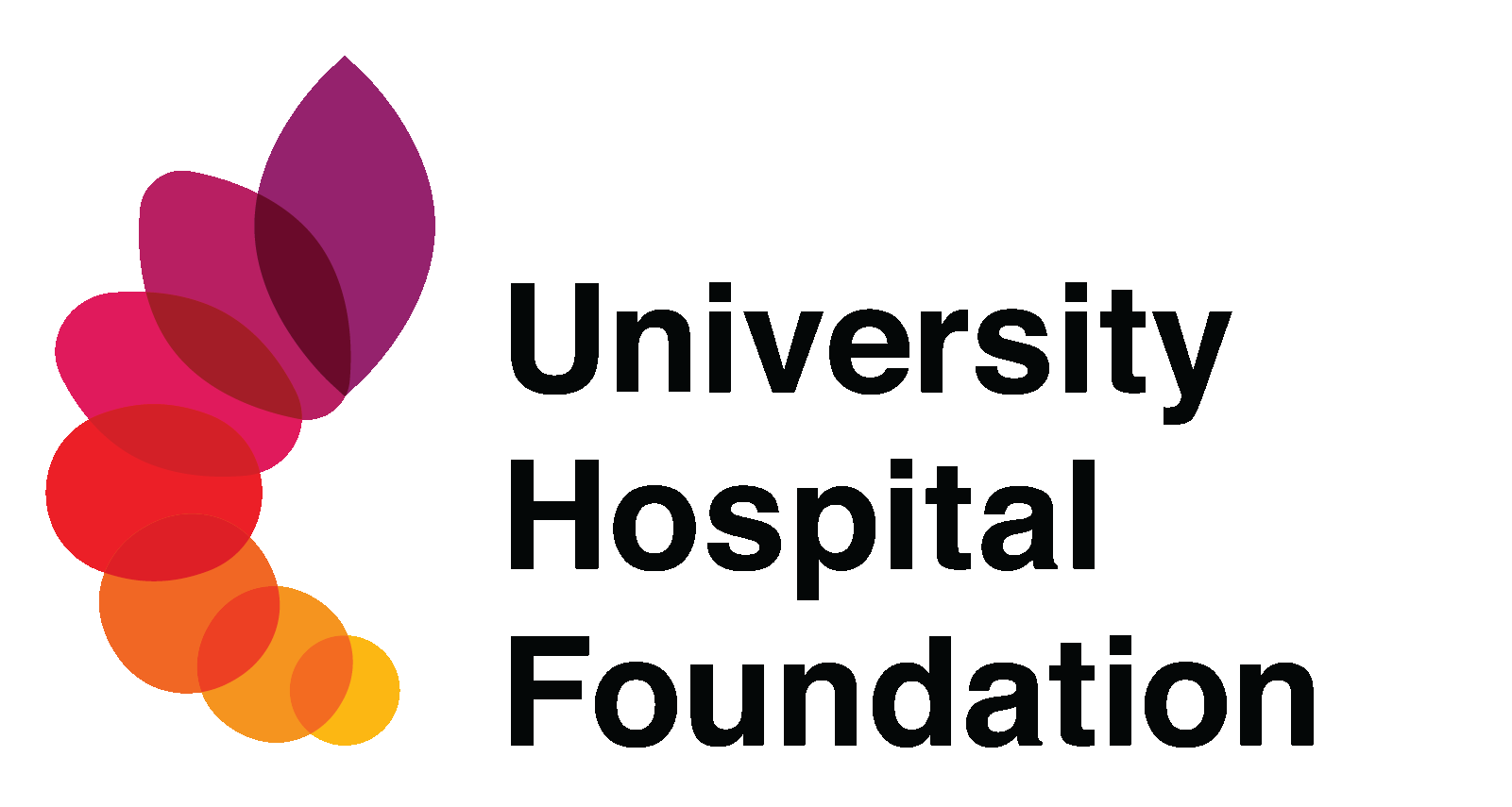Painting a Path to Wellness
The role of the arts in healing
By KAITLYN PETRY
Photography AMANDA FREELY
The arts are more than decoration or entertainment — they are a vital part of healing. And from gallery walls to the hospital bedside, the University Hospital Foundation’s Arts in Health programs are proving just that.
“I was lying in a hospital bed for days and days,” explains Margaret Iveson, who was admitted to the University of Alberta Hospital after a fall down the stairs left her with three broken bones in her neck, four broken vertebrae and a broken disk in her back in May of 2023. “One day, these two young women came into my room and started talking about something called the Artists on the Wards program. I said it sounded interesting, then one of them asked, ‘Would you like to make some art today?’”
The Foundation’s Arts in Health programs are groundbreaking in their approach to integrating art into patient care. More than just framed paintings on walls, the program includes the McMullen Gallery and manages a diverse collection of over 2,000 art pieces and the Artists on the Wards.
“Not many places have all three components,” explains Tyler Sherard, associate director, Arts in Health at the University Hospital Foundation. “In an acute care hospital, this level of artistic integration is incredibly rare.”
Bringing art to the bedside Artists on the Wards extends the healing power of the arts directly into the hands of patients, visitors and health-care staff at the University of Alberta Hospital, inclusive of the Mazankowski Alberta Heart Institute. Whether through painting, music or literary arts, these bedside encounters led by professional artists and skilled volunteers help ease stress, lower cortisol levels and improve emotional well-being.
Bev Ross, an Artist on the Wards for 17 years before her retirement, spoke about the program’s profound impact. “When you come into a hospital, most of your identity is stripped away,” she says. “You’re not in your own home, wearing your own clothes, or surrounded by your loved ones. Everyone who enters your room is there for a medical reason. Arts in Health offers something different — escape, diversion and connection. Visual art, music and literary expression act as keys that unlock emotions and memories. Sharing stories can be healing; it helps people feel seen and supported.”
For Iveson, the Artists on the Wards program provided an unexpected moment of joy. The artists who visited her room brought pre-cut paper and invited her to create butterflies. They discussed journaling, a passion of hers. “I still have the butterflies we made,” she says. “Although I didn’t know it at the time, that visit was exactly what I needed.”




The role of the arts in health care It may not be immediately clear why a hospital needs an art gallery, a curated collection or artists moving through the wards offering paintbrushes instead of prescriptions, but research has shown that the integration of the arts into health-care environments enhances patient well-being and improves health outcomes. In a sterile, clinical setting, the arts introduce warmth, humanity and comfort. Studies reveal that exposure to the arts can reduce stress, decrease the need for pain medication and even shorten hospital stays.
Research published in 2019 in the Journal of Hospital Management and Health Policy found that heart surgery patients experienced significantly less postoperative anxiety when exposed to nature imagery compared to blank walls. A 2014 study from the Cleveland Clinic revealed that 73 per cent of patients with mentalhealth disorders experienced a noticeable improvement in mood after engaging with visual art, with 61 per cent also reporting reduced stress levels.
“Music and museum interventions have been linked to pain management, and creative arts therapies have been shown to alleviate symptoms of anxiety and depression while enhancing coping capacities,” noted the World Health Organization in its Global Series on the Health Benefits of the Arts.
For Pam Kriangkum, a former patient at the University of Alberta Hospital, the art was more than just decoration — it was life-changing. Admitted in 2016 for mental health reasons, she found herself in the McMullen Gallery, where an exhibit called Temper Talk by artist Jes McCoy deeply resonated with her. The interactive display featured stamps, letters and messages of encouragement. One message stood out: “Love yourself intensely, immensely and indefinitely.” She took a photo, setting it as her phone background for nearly three years, pinning it to her bedroom wall as a daily reminder. “I suddenly saw myself differently,” Kriangkum says. “I realized there was much more of me to give.”
Change lives today
Your support of the University Hospital Foundation is changing lives today and tomorrow, supporting a future in which you and your loved ones live longer, healthier lives.
Donate Now
Facebook
Twitter
LinkedIn
